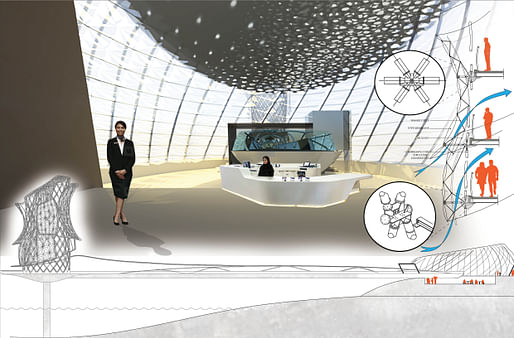
Let us mull over the bling in large-scale buildings; yes, the bling in monumental buildings has persisted throughout the ages and continues to proliferate even today at every corner of the globe, as long as the world's economy continues to mint new millionaires every day. We regard these buildings as monuments of cultural significance; however, we celebrate them with little understanding or questioning of the impetuses that bring them into existence. Consequently, it affects how we perceive them and the meaning we attribute to them. While the contemporary architecture of large-scale buildings claims to celebrate exuberance, most of the public's mind is stuck with an image of architecture as a celebration of opulence, far from the fact. Architecture is a form of thinking. It applies to any domain that can take advantage of a holistic approach to understanding, synthesizing, and representing any situation that poses a problem. Various historical evidence points to the prevalent perception of architecture as an expensive enterprise, elitist, and distant from the average populace. I can think of two reasons as to why that is how architecture is widely understood. First, large-scale buildings have been mostly funded by the wealthy and the powerful. Secondly, until more recently, large-scale structures have tended to last longer in their erection, and thus limiting the ability for architecture to permeate the conscience of the public also as a form of pop culture like music and literature, and effectively positioning itself as a distant memory, where the public is seldom reminded that architecture is a thing. The cumulative effect of the work produced in architecture is often taken for granted, yet it makes a difference in everyday life. 
The way we practice and understand architecture today dates back to the Italian renaissance. The architect worked under the Pope's patronage (the most powerful man of the time) to conceive and build his vision. Popes' vision usually consisted of building churches, their tombs, and public spaces. The architect-patron relationship later evolved to include wealthy merchants and bankers like the Medici family, whose motive often involved projecting their power and wealth through opulence in their buildings and commissioned artwork. In the 19th century, bankers' taste and style in architecture like the Rothchilds influenced industry titans, like The Vanderbilt, notably the John D. Rockerfeller Jr. family, and Andrew Carnegie, who began to fund architecture in civic buildings through their philanthropic endeavors. Again, we see the architect acting as an agent that transmits his master's vision as a gift to the public. During the 20th century, architects saw most of their work in civic buildings funded by governments and begun to see themselves as agents for the public good. The 21st century marked the ascent of corporate dominance and rapid technological advancements. The latter put an end to the architect-patron relationship as the primary source of commission for the architect. In the free-market economy, the field of architecture opened up more to entrepreneurship. In today's market landscape, the architect can engage with different areas of interest, inspire and sell an idea, rally the support he needs to bring it to realization, and engage with stakeholders at multiple levels.
Furthermore, the architect's responsibility to the public has increased to include assuming technical liability and ensuring a better understanding of the public's needs before contributing their ideas and solutions. The powerful and the wealthy, which now comprise private entities, continue to sponsor architecture with more diverse agendas than their predecessors of the 19th and 20th centuries. In modern times, endeavors to architecture, when pursued, are meant to commit to the greater good, often through philanthropic foundations. Examples include the Gates Foundation's sponsorship of the Seatle Public Library, designed by OMA, Brad Pitt's Make It Right Foundation's funding of architecture in New Orleans' community projects, and Elon Musk and Virgin Hyperloop One's sponsoring of innovation in transportation infrastructure with the hyperloop project.

Exhuberance, opulence, utilitarian, responsible design, or combined are all but different architecture with their ambitions; in either case, the impetus projects the zeitgeist and remains an essential aspect that shapes cultural significance. Today, architects have more access to enabling agencies to impact the world around them.

We live in unprecedented times of challenges, and yet full of opportunities for the field of architecture. More than ever before, our area of expertise is entrenched in a broader range of issues stretching from cultural, environmental, public health, and social equity. What is so special about our training that makes it relevant to a myriad of global issues? The simple answer is our ability to synthesize complex issues and give them a legible form.
No Comments
Block this user
Are you sure you want to block this user and hide all related comments throughout the site?
Archinect
This is your first comment on Archinect. Your comment will be visible once approved.